Rubrik Managed Volumes
Overview
With Stoware supporting a wide range of sources one can easily expand Rubrik capabilities by integrating both solutions. Storware supports file-based backup destinations with mechanism to run custom pre/post storage access integration scripts. Rubrik on the other hand is able to expose Managed Volumes which can easily be used as snapshot-driven file system backup destination. Storware initiates backups for all supported virtualization platforms or storage providers. File system backup destination has enabled pre/post storage access integration scripts which are executed in each storage-related activity (before and after changes are made). For each VM/storage instance integration assumes a separate managed volume.
Pre script locates the managed volume in Rubrik (create it if necessary), exposes it over NFS, mounts it on the node and invokes “begin snapshot” Rubrik API call. Then the changes are made to the volume (new data is being stored, expired data is removed according to the retention).
Finally, post script is being invoked to unmount the volume and invoke “end snapshot” Rubrik API call. This script is also invoked in any failure of pre script or task activity.
Example for OpenStack using Ceph RBD storage environment:
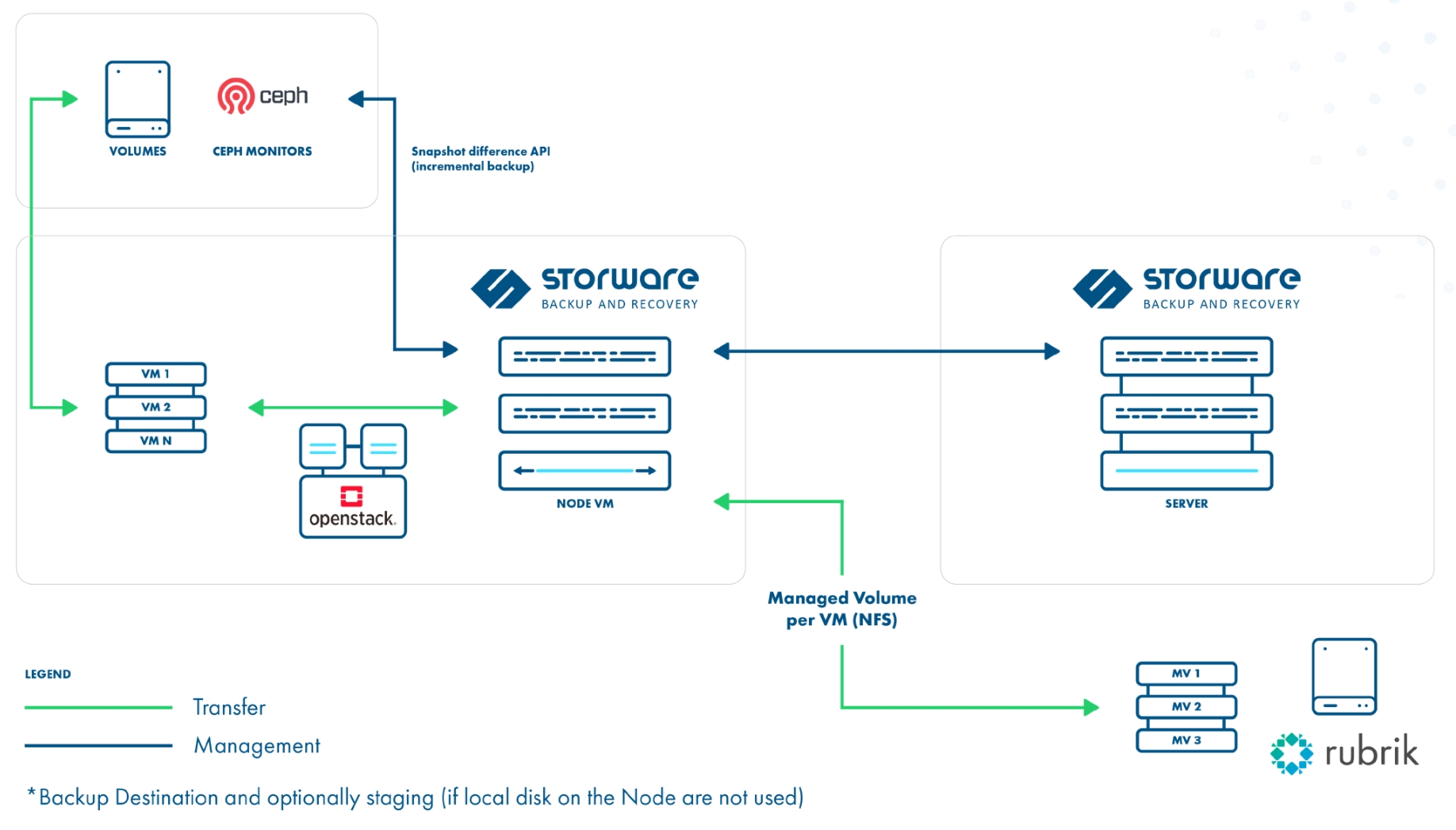
Requirements
A working Rubrik cluster (IP floating address or FQDN)
Opened network communication between Rubrik and Storware on ports:
TCP 443
NFS v3 (TCP and UDP): 111, 2049
User name and password for Rubrik software, with the following permissions:
Create, delete, modify Managed Volumes
Create snapshots for Managed Volumes
Resize Managed Volumes
Change mode: Read Only to Read-Write, and form Read-Write to Read Only on Managed Volumes
Setup
In Rubrik software cluster you need to create:
SLA Domains -> Local Domains: SLA with your retention settings for backup from Storware in Managed Volumes.
Very important: We don’t need to create any Managed Volumes on Rubrik manually – this will be created automatically by Storware, and size managed volume needed for backup is dynamically growing by Storware, so on each step, we are not losing any extra space on Rubrik.
On the Storware node you need to make the following changes:
Go to /opt/vprotect/scripts/rubrik
Edit config file and fill variables with your own information, for example:
Save this config file
Next, edit /etc/sudoers.d/01_vprotect-node file and add below lines
before line:
Now we need to configure your Storware server by using a web interface. Please enter web address: https://your_Storware_IP/or/FQDN_address, login as Global administrator into Storware.
Go to section on the left menu: Backup Destinations -> File System, and we need to create new Backup Destination – on the right click on button Create Backup Destination, choose File System:
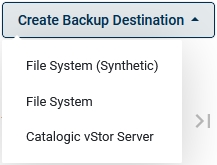
Next, enter the name for the new backup destination and choose node configuration:
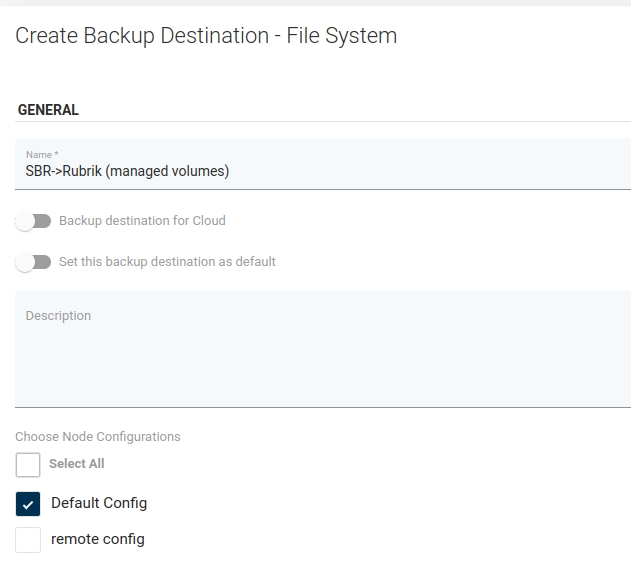
Add your temporary path, where Storware Backup & Recovery can mount Rubrik Managed Volume to store your backup data, for example:
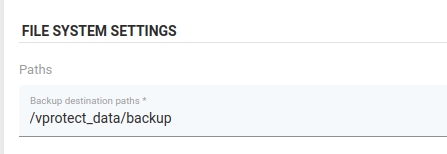
Finally, you need to activate pre and post store commands. In each, add two command arguments like in example:
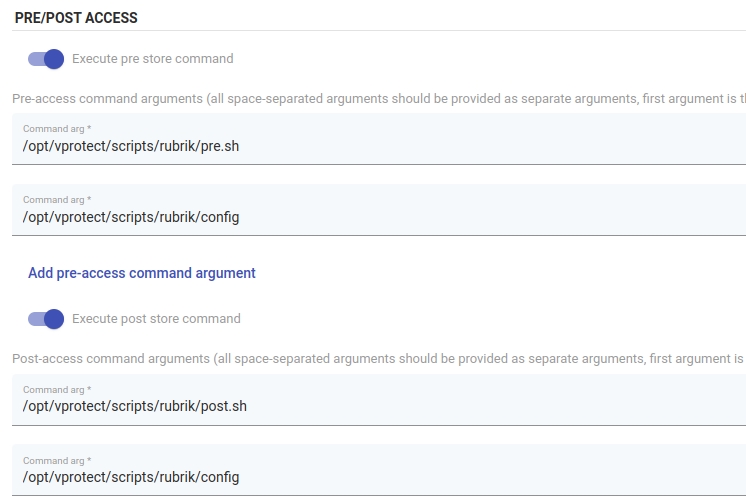
Limitations
Based on the number of nodes the Rubrik cluster has the following limitations:
three nodes configuration - protection up to 256 virtual machine instances
two nodes configuration - protection up to 128 virtual machine instances
A single Rubrik node can protect up to 64 virtual machine instances.
Last updated